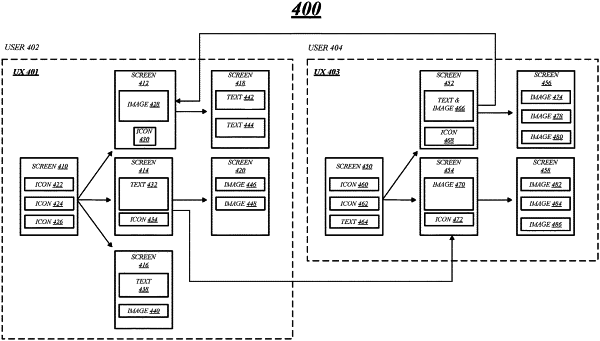| CPC G06F 3/0484 (2013.01) [G06F 3/0481 (2013.01); G06F 3/04883 (2013.01); G06F 8/38 (2013.01); G06F 11/34 (2013.01); G06F 11/3438 (2013.01)] | 17 Claims |

|
1. An apparatus comprising:
a processor; and
a memory storing instructions that, when executed by the processor, cause the processor to:
present a first user experience comprising a first set of user interface screens to a first user, each of the first set of user interface screens not included in a second set of user interface screens of a second user experience associated with a second user,
determine at least one interaction with at least one triggering screen of at least one first flow by the first user configured to cause modification of at least one modifiable screen of the second set of user interface screens,
determine at least one interaction with the at least one triggering screen of the first flow by the first user,
cause the modification of the at least one modifiable screen of the second set of user interface screens based on the at least one interaction,
determine a blended flow comprising a flow from at least one of the first set of user interface screens to at least one of the second set of user interface screens, the blended flow created based on effects of interactions of the first user with one of the first set of user interface screens blended into effects of interactions of the second user with one of the second set of user interface screens,
determine a set of possible flows between the first set of user interface screens, and
generate a tag for each of the possible flows to collect data related to a number of times an end-user experiences a specific flow of the set of possible flows.
|